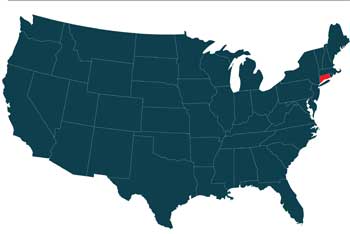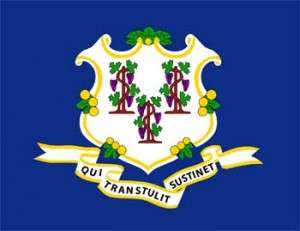Connecticut Emergency Vehicle Light State Statutes
 Emergency vehicles use different colored lights to denote their purposes. It's important for each vehicle to have warning lights so that people understand why the vehicles are on the road. Each state has slightly different laws for emergency lights, governed by state statutes. In Connecticut, state statute 14-1(5) provides the definition of an emergency vehicle. Any ambulance, police car, public service vehicle, or fire engine is considered an emergency vehicle. In addition, any vehicle that has been specifically deemed an emergency vehicle by federal, state, or local governments is covered under this statute.
Emergency vehicles use different colored lights to denote their purposes. It's important for each vehicle to have warning lights so that people understand why the vehicles are on the road. Each state has slightly different laws for emergency lights, governed by state statutes. In Connecticut, state statute 14-1(5) provides the definition of an emergency vehicle. Any ambulance, police car, public service vehicle, or fire engine is considered an emergency vehicle. In addition, any vehicle that has been specifically deemed an emergency vehicle by federal, state, or local governments is covered under this statute.
Police Lights
Police cars must use red police lights as a warning. The color of different motor vehicle lights is outlined in state statute 14-96p. A police car is meant to shine these warning lights only when en route to an emergency. Police cars in the state are not meant to have white or blue strobe lights.
Firetruck Lights
According to state statute 14-96p(4), firetrucks must use white flashing lights or revolving white strobe lights to announce their presence. Firetrucks may also use flashing red emergency lights while en route to an emergency. The white lights are used both en route to an emergency and at the emergency scene, in order to warn people about their presence.
Volunteer Firefighter Lights
State statute 14-96p(3) allows that if a vehicle is being operated by a volunteer firefighter, and that vehicle is en route to an emergency, it is legal for that vehicle to use white flashing headlights. To use these, however, the person driving the vehicle needs to have received prior authorization from their chief law enforcement official for the use of such lamps. Authorization must be granted in written form and stored within the vehicle.
State statute 14-96p(4)(b) explains that authorized volunteer firefighters may also use blue lights on the top of their motor vehicle. These blue lights might flash while the firefighter is en route to the scene of an emergency. The chief executive officer of the fire department will provide certifications for the use of blue lights in January.
Ambulance Lights
The same statute that governs police lights also governs ambulance lights. Ambulances must have bright and flashing red lights. These warning lights must be displayed when the ambulance is en route to an emergency. Also, ambulances must comply with federal regulations for their warning lights and manufacture.
If a person is involved in a volunteer ambulance type of association, and they are en route to an emergency, they may use a flashing green light upon their vehicle to indicate their status. This is outlined in state statute 14-96p(4)(c). They must have received written authorization from their chief executive officer to do so. Written authorization can be revoked by the officer.
Tow Truck Light
State statute 14-96q(c)(4)(a) refers to the use of warning lights by tow trucks and other wrecker vehicles. Tow trucks are not covered under the emergency vehicle definition in Connecticut. That said, they can use certain warning lights in compliance with state laws.
All service vehicles used for towing and wrecking purposes are permitted to use yellow and amber warning lights.
Construction Vehicle Lights
 Vehicles at construction sites are required to comply with warning light laws from the Connecticut Department of Transportation. They can use bright floodlights at construction sites, but they must not aim bright floodlights at the road. Additionally, headlamps for the construction vehicles must not be aimed at the road if they are not compliant with height regulations for headlamps on motor vehicles.
Vehicles at construction sites are required to comply with warning light laws from the Connecticut Department of Transportation. They can use bright floodlights at construction sites, but they must not aim bright floodlights at the road. Additionally, headlamps for the construction vehicles must not be aimed at the road if they are not compliant with height regulations for headlamps on motor vehicles.
Utility Vehicle Lights
If a person fills out the Flashing Light Permit issued by the Connecticut DMV, they can use flashing warning lights on their utility vehicles. Utility vehicles are considered emergency vehicles under state law, unlike many other states that do not include utility vehicles in their state definition.
Flashing light permits expire annually in the state and must be renewed. All applications are processed through the mail by the DMV's Flashing Light Unit.
Pilot Vehicle Lights
The Connecticut Department of Transportation allows pilot vehicles to use amber lights, provided they've filled out an application. Pilot vehicles from out-of-state do not need to fill out an application for warning lights, provided they have permission to use warning lights in their own state of registration.
The warning lights must be mounted on top of the vehicle and seen at a distance of up to 1,000 feet on a clear day.
Security Vehicle Lights
Security vehicles are not considered to be part of the emergency vehicle listing in Connecticut. They must comply with normal regulations regarding the use of headlights on motor vehicles.
For more information about what lights may be available to you, we suggest calling your State Highway Patrol office at: 860-534-1000
*Please note that these numbers are what we are currently able to find and the numbers may have changed since this listing.
Disclaimer: The emergency vehicle light state statute guide was created by Extreme Tactical Dynamics as a guide and reference. We make no claim to the accuracy or validity of this guide. This guide was written to the best of our knowledge and has been provided to our customers as a courtesy ONLY! The information in this guide is our interpretation of the law as we have read it. We cannot be held responsible for any errors as this is only our interpretation of the law and the laws are constantly changing. We cannot be held liable or responsible for any errors and recommend that our customers refer to their local authorities to confirm the particular statue that governs their use of emergency vehicle lights.
 Facebook
Twitter
Google+
Instagram
YouTube
Facebook
Twitter
Google+
Instagram
YouTube


